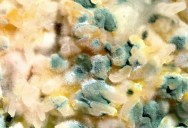What is Common Household Mold and Why is it an Emerging Threat?
Many dismiss mold as a common household nuisance, but it can be extremely dangerous.
Moreover, mold’s threat to global health is only likely to increase with climate change and rising fuel costs.

Photo Source: Pixabay
Molds are microscopic organisms that can grow on some fungi. They grow in dark, moist areas like bathrooms, leaky roofs, water pipes, and anywhere that has flooded. They often look fuzzy with a musty smell. While many are concerned about black mold in their homes, color is not a proven indication of how dangerous a mold may be, and there is no widely available test for the presence of black mold.
Mold is a health risk because it emits spores into the air surrounding it. When inhaled, most people suffer relatively mild symptoms such as stuffy nose, coughing, and itchy eyes. But others with respiratory issues, weakened immune systems, or severe allergies can have serious reactions.

Photo Source: Pexels
Molds also produce mycotoxins that can be damaging or lethal at some levels. According to some estimates, these molds can be found in up to 47 percent of homes in the US. And evidence suggests that environmental factors will only increase exposure to dangerous molds.
Rising global temperatures mean balmy weather and flooding, ideal conditions for mold growth. Evidence suggests that rising fuel costs will also accelerate the problem because it discourages people from using central heat.
You can take simple measures to reduce mold risk by keeping your homes as dry and well-ventilated as possible, but perhaps the best way to prevent exposure is by increasing mold awareness.

Sign up to get our BEST stories of the week straight to your inbox.




